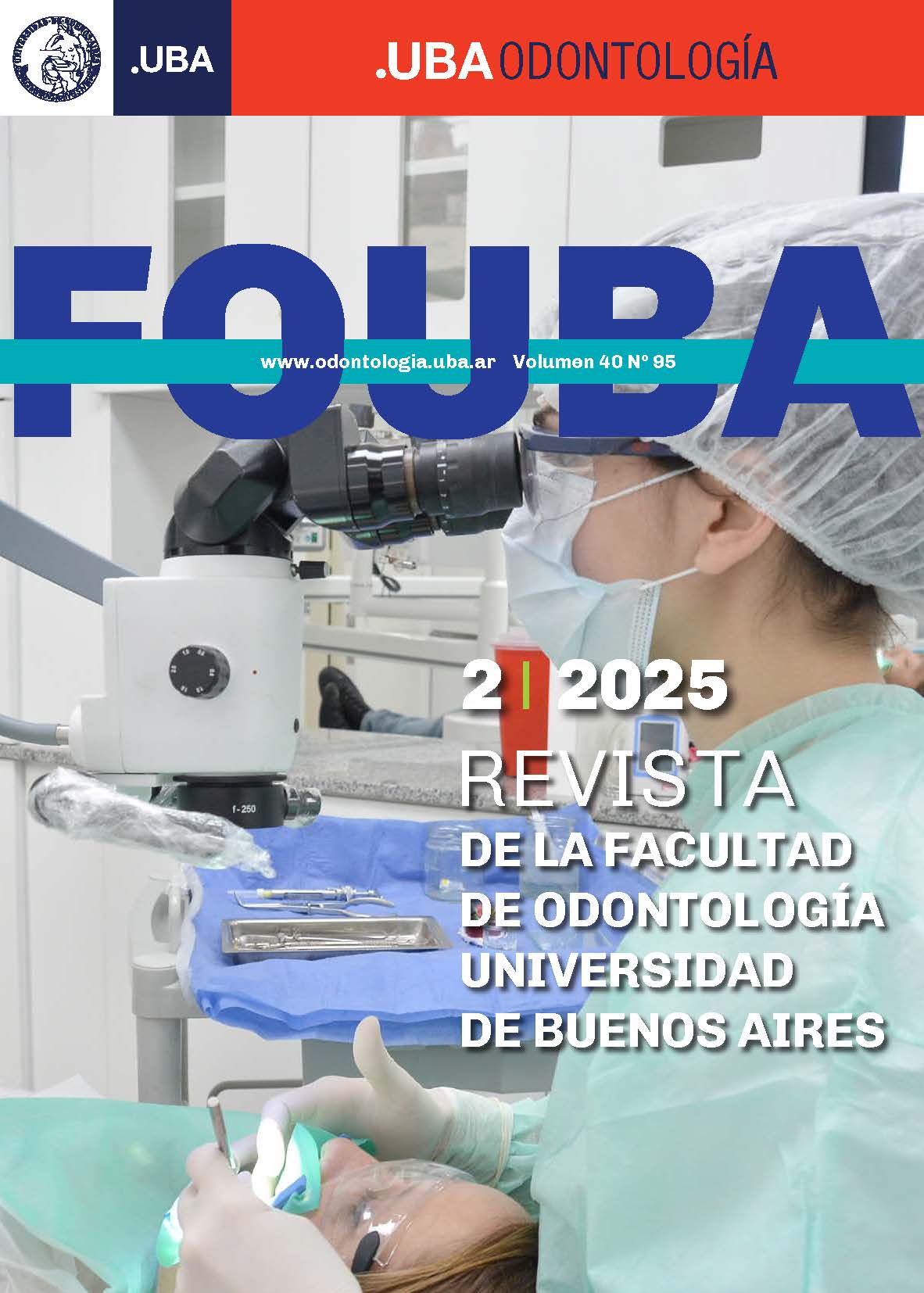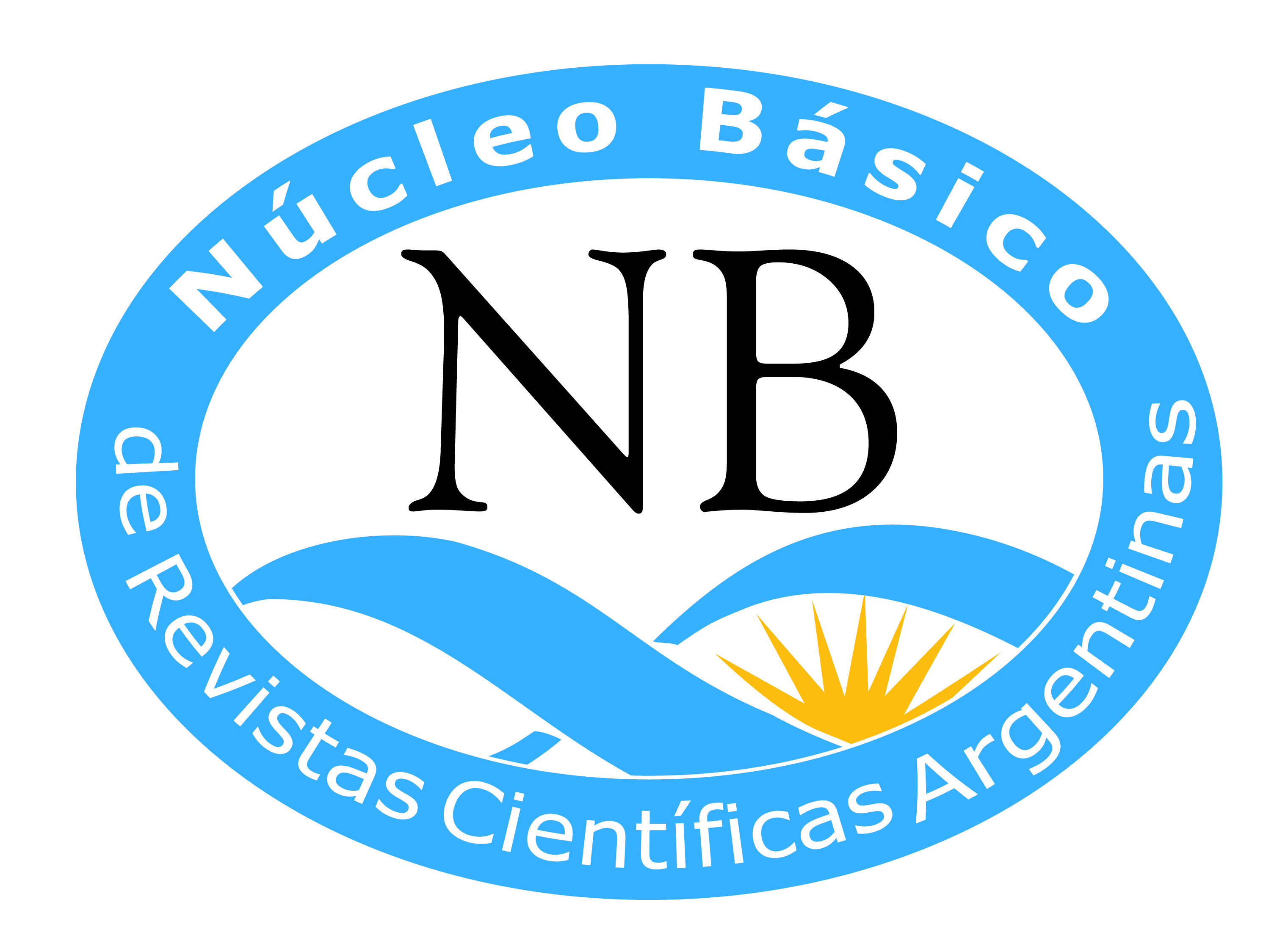Nuevas Glándulas Salivales: su Redescubrimiento e Importancia Clínica
Revisión Narrativa
DOI:
https://doi.org/10.62172/revfouba.n95.a271Palabras clave:
glándulas tubáricas, glándulas seromucosas, glándulas salivales, antígeno prostáticoResumen
En el año 2020 se produjo un hecho que sorprendió a la comunidad científica cuando se comunicó el descubrimiento de una nueva glándula salival, denominada glándula tubárica. Si bien algunos reportes muy antiguos ya mencionaban la posible existencia de una glándula salival adicional, la combinación de las técnicas tomografía computada (CT) y tomografía por emisión de positrones (PET) resultó uno de los hechos fundamentales para llevar a cabo el hallazgo. El uso diagnóstico de un antígeno que se expresa tanto en células tumorales de la próstata, así como en las células de las glándulas salivales también fue determinante para el descubrimiento. El presente trabajo tiene como objetivo difundir el importante descubrimiento y presentar una revisión narrativa de acuerdo a la información que exhibe la literatura científica actual en la temática. Además, se analiza la importancia funcional de las glándulas tubáricas y su posible papel de riesgo en la radioterapia oncológica.
Citas
Aral, İ. P., Altinisik Inan, G., Dadak, B., Görtan, F. A., y Tezcan, Y. (2024). A prospective evaluation of tubarial gland doses with acute dysphagia and treatment tolerance in head and neck cancer patients. Cureus, 16(3), e56566. https://doi.org/10.7759/cureus.56566
Boyd, A., Aragon, I. V., Abou Saleh, L., Southers, D., y Richter, W. (2021). The cAMP-phosphodiesterase 4 (PDE4) controls β-adrenoceptor- and CFTR-dependent saliva secretion in mice. The Biochemical Journal, 478(10), 1891–1906. https://doi.org/10.1042/BCJ20210212
Brandt, H. H., Baumhoer, D., y Tetter, N. (2022). Hyalinizing clear cell salivary gland carcinoma of the epipharynx: a minor salivary/tubarial gland malignancy. Biomedicine Hub, 7(1), 31–35. https://doi.org/10.1159/000521830
Chen, Y. J., Chen, S. C., Wang, C. P., Fang, Y. Y., Lee, Y. H., Lou, P. J., Ko, J. Y., Chiang, C. C., y Lai, Y. H. (2016). Trismus, xerostomia and nutrition status in nasopharyngeal carcinoma survivors treated with radiation. European Journal of Cancer Care, 25(3), 440–448. https://doi.org/10.1111/ecc.12270
Cheng, L., Ma, H., Shao, M., Fan, Q., Lv, H., Peng, J., Hao, T., Li, D., Zhao, C., y Zong, X. (2017). Synthesis of folate‑chitosan nanoparticles loaded with ligustrazine to target folate receptor positive cancer cells. Molecular Medicine Reports, 16(2), 1101–1108. https://doi.org/10.3892/mmr.2017.6740
De la Cal, C., Fernández-Solari, J., Mohn, C., Prestifilippo, J., Pugnaloni, A., Medina, V., y Elverdin, J. (2012). Radiation produces irreversible chronic dysfunction in the submandibular glands of the rat. The Open Dentistry Journal, 6, 8–13. https://doi.org/10.2174/1874210601206010008
De la Cal, C., Lomniczi, A., Mohn, C. E., De Laurentiis, A., Casal, M., Chiarenza, A., Paz, D., McCann, S. M., Rettori, V., y Elverdin, J. C. (2006). Decrease in salivary secretion by radiation mediated by nitric oxide and prostaglandins. Neuroimmunomodulation, 13(1), 19–27. https://doi.org/10.1159/000093194
Demirci, E., Sahin, O. E., Ocak, M., Akovali, B., Nematyazar, J., y Kabasakal, L. (2016). Normal distribution pattern and physiological variants of 68Ga-PSMA-11 PET/CT imaging. Nuclear Medicine Communications, 37(11), 1169–1179. https://doi.org/10.1097/MNM.0000000000000566
Ebrahim, A., Reich, C., Wilde, K., Salim, A. M., Hyrcza, M. D., y Willetts, L. (2025). A comprehensive analysis of the tubarial glands. Anatomical Record (Hoboken), 308(5), 1425–1437. https://doi.org/10.1002/ar.25561
El-Naggar, A. K., Chan, J. K. C., Takata, T., Grandis, J. R., y Slootweg, P. J. (2017). The fourth edition of the head and neck World Health Organization blue book: editors' perspectives. Human Pathology, 66, 10–12. https://doi.org/10.1016/j.humpath.2017.05.014
Essa, D., Kondiah, P. P. D., Kumar, P., y Choonara, Y. E. (2023). Design of chitosan-coated, quercetin-loaded PLGA nanoparticles for enhanced PSMA-specific activity on LnCap prostate cancer cells. Biomedicines, 11(4), 1201. https://doi.org/10.3390/biomedicines11041201
Grootelaar, R. G. J., van Ginkel, M. S., Nienhuis, P. H., Arends, S., Pieterman, R. M., Brouwer, E., Bootsma, H., Glaudemans, A. W. J. M., y Slart, R. H. J. A. (2023). Salivary gland 18F-FDG-PET/CT uptake patterns in Sjögren's syndrome and giant cell arteritis patients. Clinical and Experimental Rheumatology, 41(12), 2428–2436. https://doi.org/10.55563/clinexprheumatol/8qt9me
Hasny, N. S., Amiruddin, F. M., Hussain, F. A., y Abdullah, B. (2021). Unilateral tubarial oncocytic papillary cystadenoma presenting with epistaxis. Medeniyet Medical Journal, 36(4), 343–347. https://doi.org/10.4274/MMJ.galenos.2021.40404
Heynickx, N., Herrmann, K., Vermeulen, K., Baatout, S., y Aerts, A. (2021). The salivary glands as a dose limiting organ of PSMA- targeted radionuclide therapy: A review of the lessons learnt so far. Nuclear Medicine and Biology, 98-99, 30–39. https://doi.org/10.1016/j.nucmedbio.2021.04.003
Kaplan, İ., Yeprem, Ö., Kömek, H., Kepenek, F., Güzel, Y., Karaoğlan, H., Yildirim, M. S., Şenses, V., Kiliç, R., Kaya İpek, F., Budak, E., Yanarateş, A., y Can, C. (2025). Contribution of tubarial salivary gland function detected through 68 Ga-prostate-specific membrane antigen PET/computed tomography to total salivary gland function. Nuclear Medicine Communications, 46(6), 553–557. https://doi.org/10.1097/MNM.0000000000001970
Ling, S. W., van der Veldt, A., Segbers, M., Luiting, H., Brabander, T., Y Verburg, F. (2024). Tubarial salivary glands show a low relative contribution to functional salivary gland tissue mass. Annals of Nuclear Medicine, 38(11), 913–918. https://doi.org/10.1007/s12149-024-01965-x
Matsusaka, Y., Yamane, T., Fukushima, K., Seto, A., Matsunari, I., Kuji, I. (2021). Can the function of the tubarial glands be evaluated using [99mTc]pertechnetate SPECT/CT, [18F]FDG PET/CT, and [11C]methionine PET/CT?. EJNMMI Research, 11(1), 34. https://doi.org/10.1186/s13550-021-00779-6
Mentis, A. A., y Chrousos, G. P. (2021). Tubarial salivary glands in Sjogren syndrome: are they just a potential missing link with no broader implications?. Frontiers in Immunology, 12, 684490. https://doi.org/10.3389/fimmu.2021.684490
Nagahata, K., Kanda, M., Kamekura, R., Sugawara, M., Yama, N., Suzuki, C., Takano, K., Hatakenaka, M., y Takahashi, H. (2022). Abnormal [18F]fluorodeoxyglucose accumulation to tori tubarius in IgG4-related disease. Annals of Nuclear Medicine, 36(2), 200–207. https://doi.org/10.1007/s12149-021-01691-8
Nishida, H., Kondo, Y., Kusaba, T., Kadowaki, H., y Daa, T. (2022). Immunohistochemical reactivity of prostate-specific membrane antigen in salivary gland tumors. Head and Neck Pathology, 16(2), 427–433. https://doi.org/10.1007/s12105-021-01376-8
Pringle, S., Bikker, F. J., Vogel, W., de Bakker, B. S., Hofland, I., van der Vegt, B., Bootsma, H., Kroese, F., Vissink, A., y Valstar, M. (2023). Immunohistological profiling confirms salivary gland-like nature of the tubarial glands and suggests closest resemblance to the palatal salivary glands. Radiotherapy and Oncology, 187, 109845. https://doi.org/10.1016/j.radonc.2023.109845
Rebella, G., Basso, L., Federici, M., y Castaldi, A. (2019). Recurrent epistaxis of unknown origin: the role of imaging. Acta Neurologica Taiwanica, 28(4), 126–130. http://www.ant-tnsjournal.com/Mag_Files/28-4/004.pdf
Schumann S. (2021). Salivary glands at the pharyngeal ostium of the Eustachian tube are already described in histological literature. Radiotherapy and Oncology, 154, 326. https://doi.org/10.1016/j.radonc.2020.12.022
Silver, D. A., Pellicer, I., Fair, W. R., Heston, W. D., y Cordon-Cardo, C. (1997). Prostate-specific membrane antigen expression in normal and malignant human tissues. Clinical Cancer Research, 3(1), 81–85. https://aacrjournals.org/clincancerres/article/3/1/81/8113/Prostate-specific-membrane-antigen-expression-in
Suvvari, T. K., y Arigapudi, N. (2020). The tubarial glands discovered but not defined – a narrative review. Journal of Radiation and Cancer Research, 11(4), 140–141. https://doi.org/10.4103/jrcr.jrcr_57_20
Thakar, A., Kumar, R., Thankaraj, A. S., Rajeshwari, M., y Sakthivel, P. (2021). Clinical implications of tubarial salivary glands. Radiotherapy and Oncology, 154, 319–320. https://doi.org/10.1016/j.radonc.2020.12.006
Tomoda, K., Morii, S., Yamashita, T., y Kumazawa, T. (1981). Deviation with increasing age in histologic appearance of submucosal glands in human eustachian tubes. Acta Oto-Laryngologica, 92(5-6), 463–467. https://doi.org/10.3109/00016488109133285
Valstar, M. H., de Bakker, B. S., Steenbakkers, R. J. H. M., de Jong, K. H., Smit, L. A., Klein Nulent, T. J. W., van Es, R. J. J., Hofland, I., de Keizer, B., Jasperse, B., Balm, A. J. M., van der Schaaf, A., Langendijk, J. A., Smeele, L. E., y Vogel, W. V. (2021). The tubarial salivary glands: a potential new organ at risk for radiotherapy. Radiotherapy and Oncology, 154, 292–298. https://doi.org/10.1016/j.radonc.2020.09.034
Wright, G. L., Jr, Haley, C., Beckett, M. L., y Schellhammer, P. F. (1995). Expression of prostate-specific membrane antigen in normal, benign, and malignant prostate tissues. Urologic Oncology, 1(1), 18–28. https://doi.org/10.1016/1078-1439(95)00002-y
Wu, M. J., Knoll, R. M., Chari, D. A., Remenschneider, A. K., Faquin, W. C., Kozin, E. D., y Poe, D. S. (2021). Further research needed to understand relationship between tubarial glands and eustachian tube dysfunction. Otolaryngology--Head and Neck Surgery, 165(6), 759–761. https://doi.org/10.1177/01945998211004256
Publicado
Cómo citar
Número
Sección
Licencia
Derechos de autor 2025 Revista de la Facultad de Odontologia. Universidad de Buenos Aires

Esta obra está bajo una licencia internacional Creative Commons Atribución-NoComercial-SinDerivadas 4.0.











